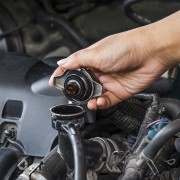Ignoring signs of trouble in your car's transmission can lead to expensive, long-term damage or leave you stranded with a stalled car. Here's what to watch for.
- Browse Categories
- All Tips
-
Home & Garden
- All
- Appliances
- Bathroom
- Cleaning
- Crafts
- Decorating
- Electrical
- Flooring
- Furniture
- Garage Door
- Gardening
- Green Living
- Heating
- Home Alarm Systems
- Home Maintenance
- Home Remedies
- Home Security
- Home Staging
- House Sitting
- Junk Removal
- Kitchen
- Lawn Care
- Lock Systems
- Moving
- Outdoor Living
- Pest Control
- Plumbing
- Renovation
- Roofing
- Snow Removal
- Storage
- Tools
- Tree Service
- Health
- Family
- Travel
- Auto
- More Tips

5 car transmission problems you should never ignore
October 17, 2014

1. Lack of gear response
While you’re driving, does your car hesitate to change gears, or even refuse to do so? This is a serious sign of trouble with the transmission.
2. Slipping out of gear
Automatic transmission slippage is when you're driving in a certain gear and you feel like the car changes gear on its own. This feeling might also be accompanied by sounds from the engine, and your car may “act” like it’s struggling to accelerate or do what you want it to.
3. Slow engagement
If when you shift from “P” into “D” and press the gas there is a pause or delay before the car actually does anything, this is an indication of trouble with the transmission.
4. Transmission leaks
We all see leak spots under our cars from time to time, and most often they are innocuous puddles caused by things like water dripping off the air conditioner. But if you notice repeated spots, or if it’s not air conditioning season, lay plain cardboard down under your car so you can collect a sample of the leaking fluid.
- Transmission fluid is usually bright red. If you see this colour on your cardboard, you probably have a hole that needs patching.
- If you see a darker red or brown colour, this may mean your transmission fluid is not only leaking, but also needs to be changed.
5. Warning lights
Is the car’s “check engine” light on? Alone, this isn't necessarily something to worry about, but if there is a warning light on in your vehicle and you have noticed one or more of the above signs of trouble, it’s best to have your car checked out. The auto mechanic shop can use a code reader to see what is triggering the check engine light.
If you drive every day, you have a good sense of what your car is like. You can tell when things seem off. If something feels of the out-of-the-ordinary and you're unsure of what is wrong, it's worth having your car's engine checked out.







